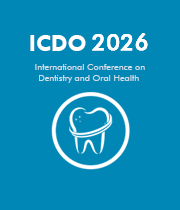Pediatric Maxillary Fractures
Pediatric maxillary fractures refer to the breaking or fracturing of the upper jawbone in children. These injuries typically result from trauma such as falls, sports accidents, or vehicular collisions. Due to the developing nature of the pediatric maxilla, fractures may present unique challenges, requiring careful consideration of growth factors and potential impacts on facial development.
Diagnosis involves a thorough clinical examination and imaging studies like CT scans to assess the extent and location of the fracture. Treatment approaches vary based on the severity of the fracture and may include surgical interventions or conservative management with immobilization.
Pediatric maxillary fractures may affect the surrounding structures, such as the nose, eyes, or teeth, necessitating a multidisciplinary approach involving oral and maxillofacial surgeons, ophthalmologists, and dentists. Proper alignment and stability are critical for optimal healing, considering the dynamic growth patterns in pediatric patients.
Post-traumatic care involves close monitoring of facial growth, addressing any potential long-term effects on aesthetics and function. Emphasis on age-appropriate psychological support is vital to help children cope with the physical and emotional aspects of pediatric maxillary fractures. Advances in pediatric traumatology contribute to improved outcomes, ensuring the restoration of facial form and function for young patients.

David Geoffrey Gillam
Queen Mary University of London, United Kingdom
Christopher Turner
Spacemark Dental, United Kingdom




Title : Evaluating hygienist follow up for head and neck oncology patients in secondary care: Results from a two cycle audit
Peter Basta, Newcastle Dental Hospital, United Kingdom
Title : Atypical facial pain unravelled
Christopher Turner, Spacemark Dental, United Kingdom
Title : New treatment of temporomandibular disorder through muscle balance and muscle regeneration by activation of quiescent muscle stem cells( satellite cells) with mitochondrial dynamics
Ki Ji Lee, National Reserach Foundation & Busan Medical University, Korea, Republic of
Title : MRONJ and ORN: Referral or management in primary care? Navigating guidelines in the context of long waiting lists
Alisha Sagar, NHS England, United Kingdom
Title : Managing the unexpected: An Insight into supernumerary teeth
Bahar Gharooni Dowrani, Guy's and St Thomas' NHS Foundation Trust, United Kingdom
Title : Laxative prescribing for post operative head and neck cancer patients at Derriford Hospital
Pui Sze Kylie Li, Cardiff and Vale University Health Board, United Kingdom